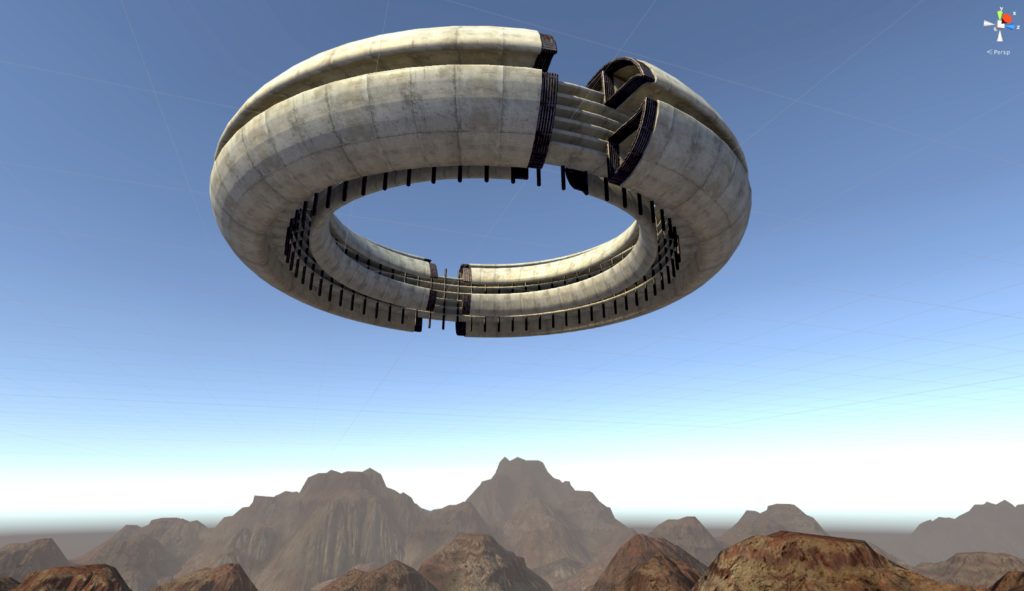Architectural experience (AX) is a subset of user experience (UX), particularly in 3D game environments. AX is generated by a number of elements that are found in real-world architecture, such as surface, enclosure, circulation, materials, light, details, etc. along organizational principles such as axial symmetry, repetition through a rule set, radial and linear arrangements, etc.
When designing game environments, level designers often begin with circulation and zones. The walls, doors and ramps are added to carry players through or hold them back in zones that spawn resources or enemies, signal the location of an exit, provide cover from enemy attackers, etc. While this design process is very important for having the game environment jibe with the central mechanic of the game, it risks missing an opportunity to focus on AX, where the player experiences a joy in the architecture itself. More often than not, the gray box becomes a bit more detailed and textured, with the result that the architecture becomes minimal back-drop for the action.
Many games have become notable for providing AX above and beyond the basic facilitation of game mechanic. The Assasin’s Creed franchise is a good example, where the game environments are a fantastic blend of historic urban fabric modified to stage the player’s specific questing objectives.
Symmetry and repetition may be bad in many cases for player orientation and rich gameplay, but this does not mean the game AX can’t deliver the beauty of axial organization, repetition, proportion, etc., since these qualities may always be eroded with further environment editing: deterioration of wall planes, toppled towers, carts that block one getaway, but not another, a blood stain on this column, but not the others, etc. In fact, according to mnemonic practices of the ancient orators, repetition + differentiation are the keys to spatial memory.
Modeling grand architecture can be challenging using polygonal modelers. There is a logic of architecture that one can execute by hand, but for complex systems, such as an ancient basilica with many columns and arches, this can be cumbersome.
One strategy is to use a parametric modeler to build up the complexity of the world procedurally, with certain noise factors in the mix, but then freeze the model and further edit it in a polygonal modeling system to break the logic with autographical gestures, adding uniqueness to the environment that enriches the logically generated forms.
When we see a post-apocalyptic cityscape, it is the sublime effect of order turned to chaos that captures our imagination. Rectilinear buildings with evenly-space floor decks are turned into more organic forms through the destruction of parts of the facade to deterioration at the corners. A regular grid of streets becomes an obstacle course of burnt out vehicles and fallen lampposts. Pure chaos can also have its sublime quality, but is very different from order-to-chaos frozen in a post-apocalyptic environment.
Order-to-chaos can also be found in ancient ruins on a cliff that has succumbed to natural erosion. The power of ruins is in the eye’s shifting from the perception of the original order and the later organic or randomized form of this order. Perhaps it is the psychological joy of pattern recognition, where when confronted with a noisy tableau, we begin to sense an order or pattern hidden in the noise.
I would argue that, in environment design and construction that is interested in maximizing AX, a logical additive modeling phase with a procedural modeler such as Archimatix, ported into a polygonal modeler such as ProBuilder for an autographic, hand-gestured phase of modification is a powerful workflow to achieve the order-to-chaos feel of the environment.


Leave a Reply
You must be logged in to post a comment.